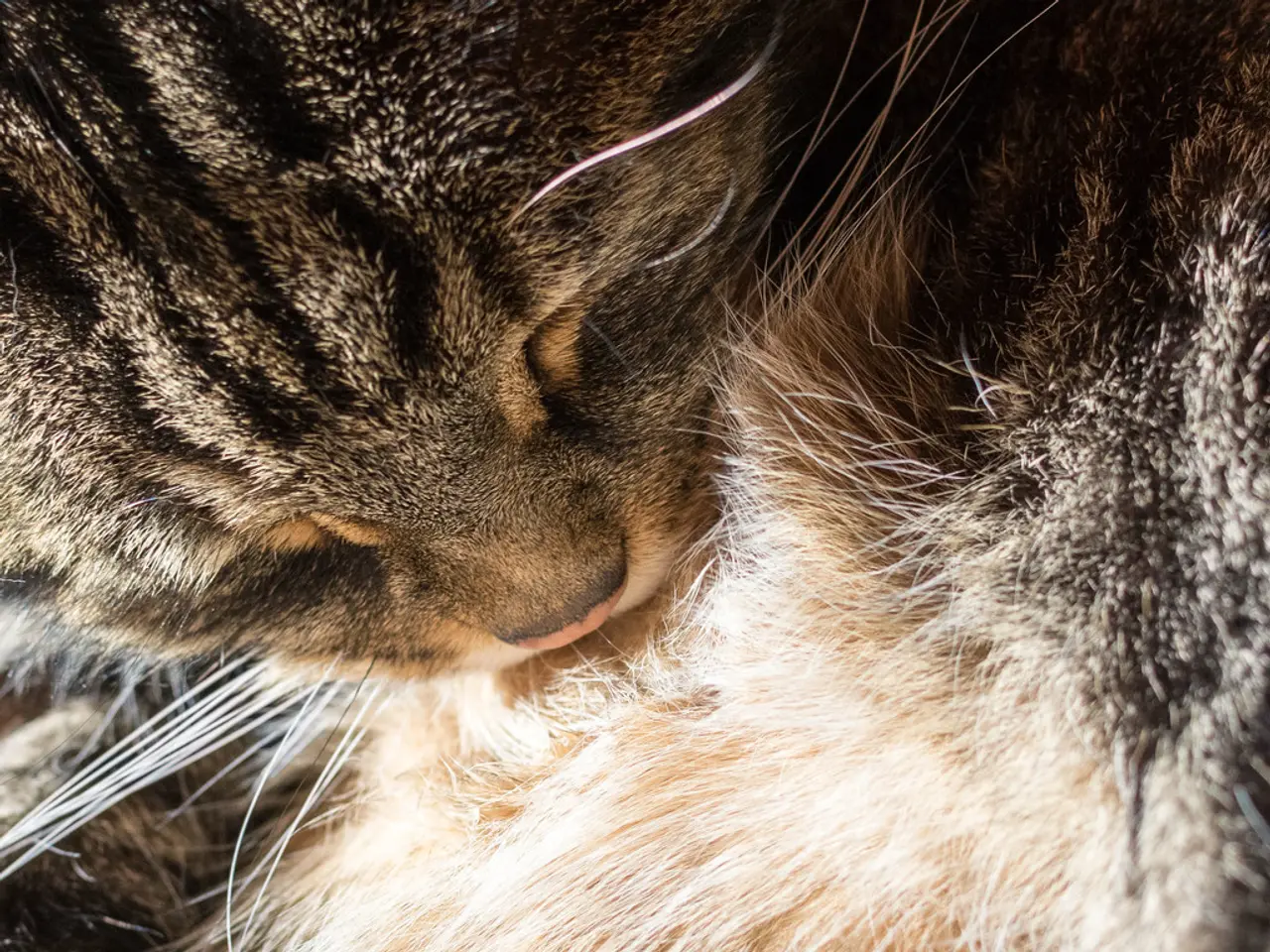Feline Gingivitis: The Agonizing and Progressive Early Stage of Dental Disease in Cats
In the feline world, gingivitis – the inflammation of a cat's gums – can be a common issue, with several underlying causes. These include dental plaque and tartar, feline chronic gingivostomatitis (FCGS), viral infections, tooth resorption, poor oral hygiene, genetic predisposition, diet, and breed.
Gingivitis in cats often begins with a build-up of plaque on a cat's teeth. If not regularly removed, this plaque hardens into tartar, which further irritates the gums and worsens the inflammation. This can lead to serious consequences, including chronic pain, tooth loss, oral infections, and even poor general health. In severe cases, it may cause weight loss, reduced quality of life, increased veterinary costs, and even increased risks of other health problems.
Fortunately, there are steps you can take to manage and prevent gingivitis in your cat. A common first step in treating gingivitis is professional dental cleaning, involving a full dental scale and polish under general anesthesia. This helps remove the plaque and tartar that has built up on your cat's teeth.
Veterinary care is crucial for long-term success. Regular dental checks can help catch issues before they become serious, even if a cat isn't showing obvious signs. Medical treatment may include anti-inflammatory medication, antibiotics, or immune-modulating drugs. In some cases, tooth extraction may be necessary if teeth are loose, damaged, or contributing to chronic inflammation.
Home care is essential after professional treatment to prevent recurrence. Products like pet toothbrushes, dental diets, water additives, dental gels, and sprays are available to help maintain your cat's oral health. Regular tooth brushing, using pet-safe toothpaste, is considered the gold standard; it directly removes plaque before it hardens into tartar.
Mild cases of gingivitis can sometimes be managed at home, but once tartar is present, it can only be removed professionally. Dental treats and chews, especially those approved by the Veterinary Oral Health Council (VOHC), can help mechanically or chemically reduce plaque but should complement – not replace – brushing and professional care.
Some cats may require more intensive treatment, such as extractions or surgery, for severe cases of gingivitis or stomatitis. Soft or wet food diets can contribute to plaque build-up in cats, while dental diets and regular brushing can help prevent gingivitis.
Certain breeds, such as Abyssinians, Siamese, and Persians, are more prone to dental issues, including gingivitis. Regular veterinary dental checkups support long-term oral health management at home.
Emma Chandley, who graduated from the Royal Vet College in London in 2011, has a keen interest in surgery and went on to do a postgraduate certificate in small animal surgery and was then awarded advanced practitioner status in the same discipline. This article was last updated in July 2025 by Emma Chandley.
Vaccinations are also important for preventing some viral infections that contribute to gingivitis and stomatitis in cats. Regular, preventative care is the best way to ensure your cat maintains good oral health and lives a happy, healthy life.
[1] Veterinary Oral Health Council [2] International Society for Feline Dermatology [4] International Society for Feline Medicine
- In the feline world, poor oral hygiene, dental plaque, and tartar are common causes of gingivitis in cats, leading to chronic pain, tooth loss, oral infections, and even poor general health.
- Professional dental cleaning, involving a full dental scale and polish under general anesthesia, is a common first step in treating gingivitis in cats.
- Home care is essential after professional treatment to prevent recurrence, with products like pet toothbrushes, dental diets, water additives, dental gels, and sprays available to help maintain a cat's oral health.
- Regular tooth brushing, using pet-safe toothpaste, is considered the gold standard for plaque removal before it hardens into tartar.
- Dental treats and chews, especially those approved by the Veterinary Oral Health Council, can help mechanically or chemically reduce plaque, but they should complement – not replace – brushing and professional care.
- Certain breeds, such as Abyssinians, Siamese, and Persians, are more prone to dental issues, including gingivitis, making regular veterinary dental checkups important for long-term oral health management at home.
- Emma Chandley, an advanced practitioner in small animal surgery, emphasizes the importance of regular, preventative care, including vaccinations, for preventing some viral infections that contribute to gingivitis and stomatitis in cats.
- Consulting resources like the Veterinary Oral Health Council, International Society for Feline Dermatology, and International Society for Feline Medicine can provide additional information on maintaining a cat's health and mental- health, as well as actionable steps for health-and-wellness, such as providing appropriate pet-safe toys and food, and considering mental-health aspects like enrichment when caring for your feline companion.




